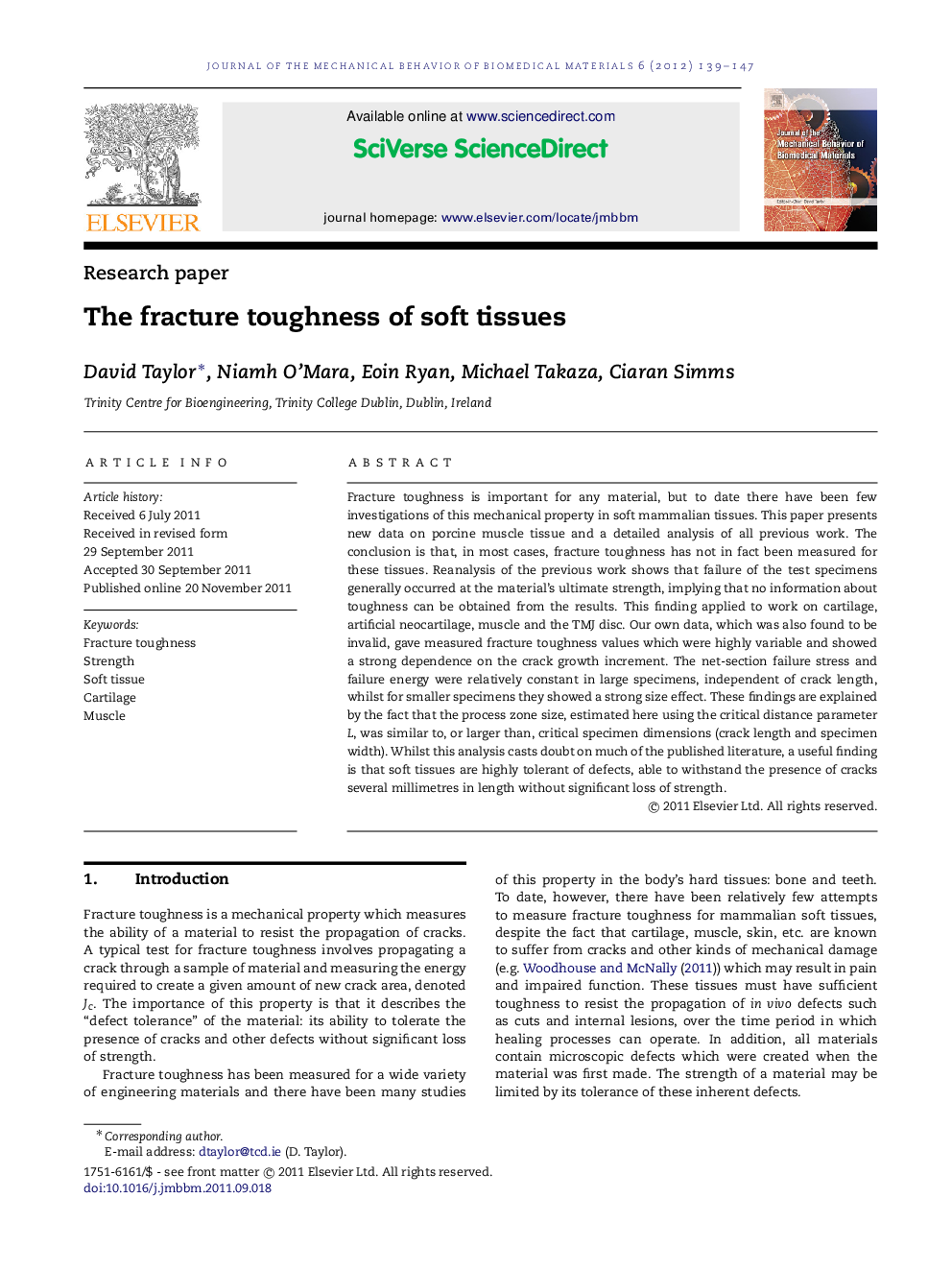| Article ID | Journal | Published Year | Pages | File Type |
|---|---|---|---|---|
| 811260 | Journal of the Mechanical Behavior of Biomedical Materials | 2012 | 9 Pages |
Fracture toughness is important for any material, but to date there have been few investigations of this mechanical property in soft mammalian tissues. This paper presents new data on porcine muscle tissue and a detailed analysis of all previous work. The conclusion is that, in most cases, fracture toughness has not in fact been measured for these tissues. Reanalysis of the previous work shows that failure of the test specimens generally occurred at the material’s ultimate strength, implying that no information about toughness can be obtained from the results. This finding applied to work on cartilage, artificial neocartilage, muscle and the TMJ disc. Our own data, which was also found to be invalid, gave measured fracture toughness values which were highly variable and showed a strong dependence on the crack growth increment. The net-section failure stress and failure energy were relatively constant in large specimens, independent of crack length, whilst for smaller specimens they showed a strong size effect. These findings are explained by the fact that the process zone size, estimated here using the critical distance parameter LL, was similar to, or larger than, critical specimen dimensions (crack length and specimen width). Whilst this analysis casts doubt on much of the published literature, a useful finding is that soft tissues are highly tolerant of defects, able to withstand the presence of cracks several millimetres in length without significant loss of strength.
Graphical abstractFigure optionsDownload full-size imageDownload high-quality image (171 K)Download as PowerPoint slideHighlights► New data from fracture experiments on muscle tissue. ► A wide range of specimen sizes as well as crack lengths. ► Reanalysis of all published data on fracture toughness of soft tissues. ► We conclude that most of this data is not in fact measuring toughness at all. ► Toughness of most soft tissues is so high that cracks will not normally propagate.
